The Motherland monument in Kyiv, proudly standing on a high hill on the right bank of the Dnipro River, is one of the main symbols of Kyiv. This unique steel sculpture of a woman with a sword and a shield in her hands is considered the highest in Europe and among the 20 highest in the world. A wonderful view of Kyiv in all its glory opens from its two viewing platforms.

JOIN US ON TELEGRAM
Follow our coverage of the war on the @Kyivpost_official.
The monument is a unique all-welded steel structure, which consists of three layers: the main steel frame weighing more than 280 tonnes, the auxiliary frame with sheathing weighing 108 tonnes, and the cladding itself made of 1.5 mm stainless steel weighing 90 tonnes, which is made of 27 multi-tonne blocks. The special welding method was developed by the E.O. Paton Electric Welding Institute.
- Check out the freshest Ukraine news items as of today.
- Russian Losses
Initially, the monument was conceived as a symbol of Victory but not Motherland, but the latter came into use almost immediately after its construction.
The author of the project is People's Artist of the Ukrainian SSR and the USSR, the Ukrainian sculptor Vasyl Boroday. The famous sculptors Fridrich Sohoyan and Vasyl Vinaykin, as well as the architects Viktor Yelizarov, Heorhiy Kisliy and Mykola Feshchenko helped bring the project to life.
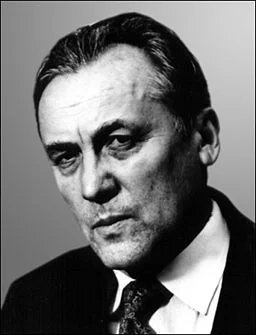
Ukrainian sculptor Vasyl Boroday.
The project itself had several versions. It was supposed that a 90-meter bronze figure of a woman with a child in her hands, covered with gilding, would rise on the pedestal. At the foot of the statue, a waterfall was supposed to flow down to the Dnipro from a height of 30 meters, on both sides of which there were to be sculptures of warriors fording the river. However, the ideological factors of the time interfered with the idea. The version in which the statue holds a sword and a shield with the Soviet coat of arms won the competition because one of the then high-ranking officials remarked that the child in the hands of Motherland would look like a Trident from the Darnytsia district in Kyiv.
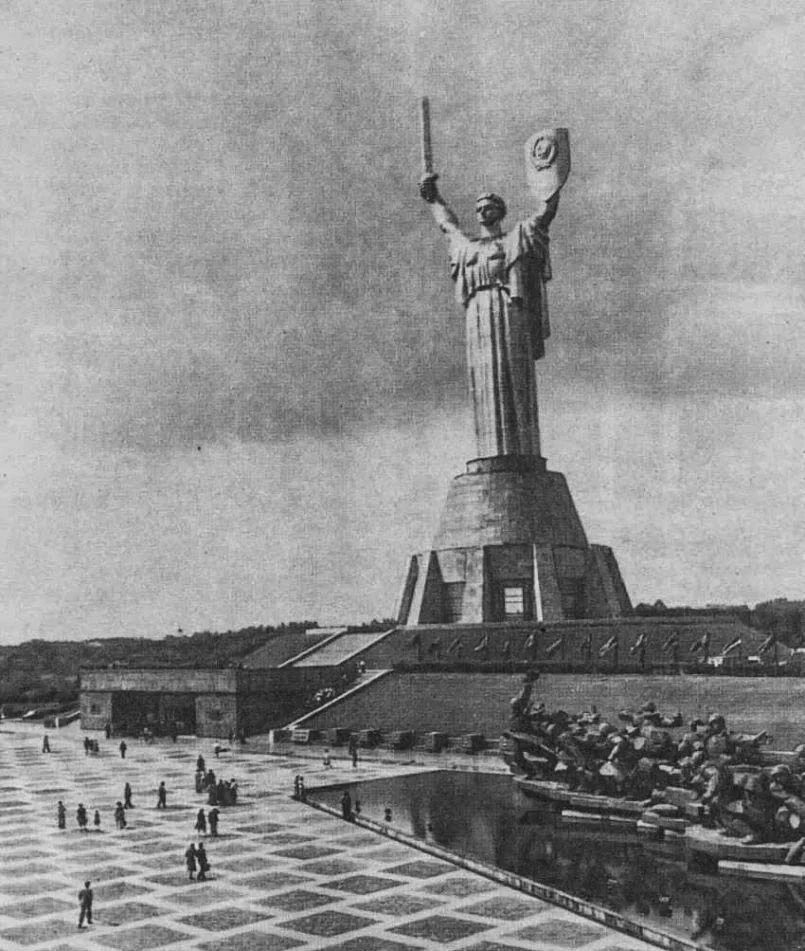 Photo 1981.
Photo 1981.
It's worth mentioning that in 2023 the Soviet coat of arms on the monument was replaced by the Ukrainian national symbol Trident, timing the opening of the updated Motherland to Ukraine's Independence Day. This transformation became a historical event and caused a wave of indignation in Russia. Now the coat of arms of Ukraine is visible from all the districts of the city. It is interesting that Ukraine's third president Viktor Yushchenko took part in the creation of the trident, which replaced the Soviet coat of arms on the monument, helping create the model.
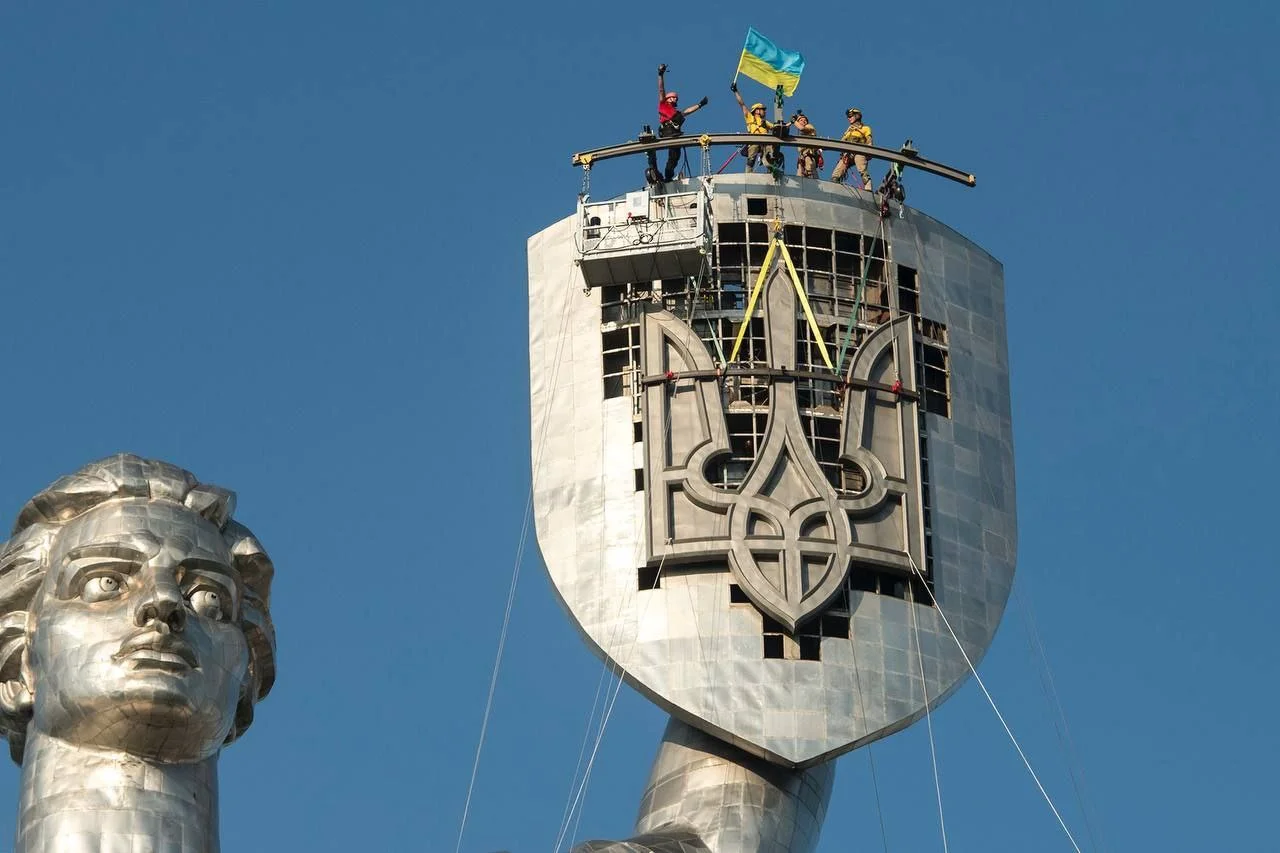
The stainless steel frame was manufactured by two enterprises: ingots were produced at Dniprospetsstal, while sheets were made from them at Zaporizhstal rolling shops. In Kyiv, the steel components were assembled into one structure. The welders of the Motherland monument were paid 50 Soviet karbovanets (the currency at the moment of building the statue) per day, which was a large amount at that time. However, even such a salary did not correspond to the complexity and level of harmfulness of the work, since the welders burned their eyes, making 30 km of welding seams during the installation. The engineers received a regular salary, but they were satisfied with the fact that they were building one of the "miracles" of Kyiv. There is a large room under the monument that can accommodate more than 400 people.
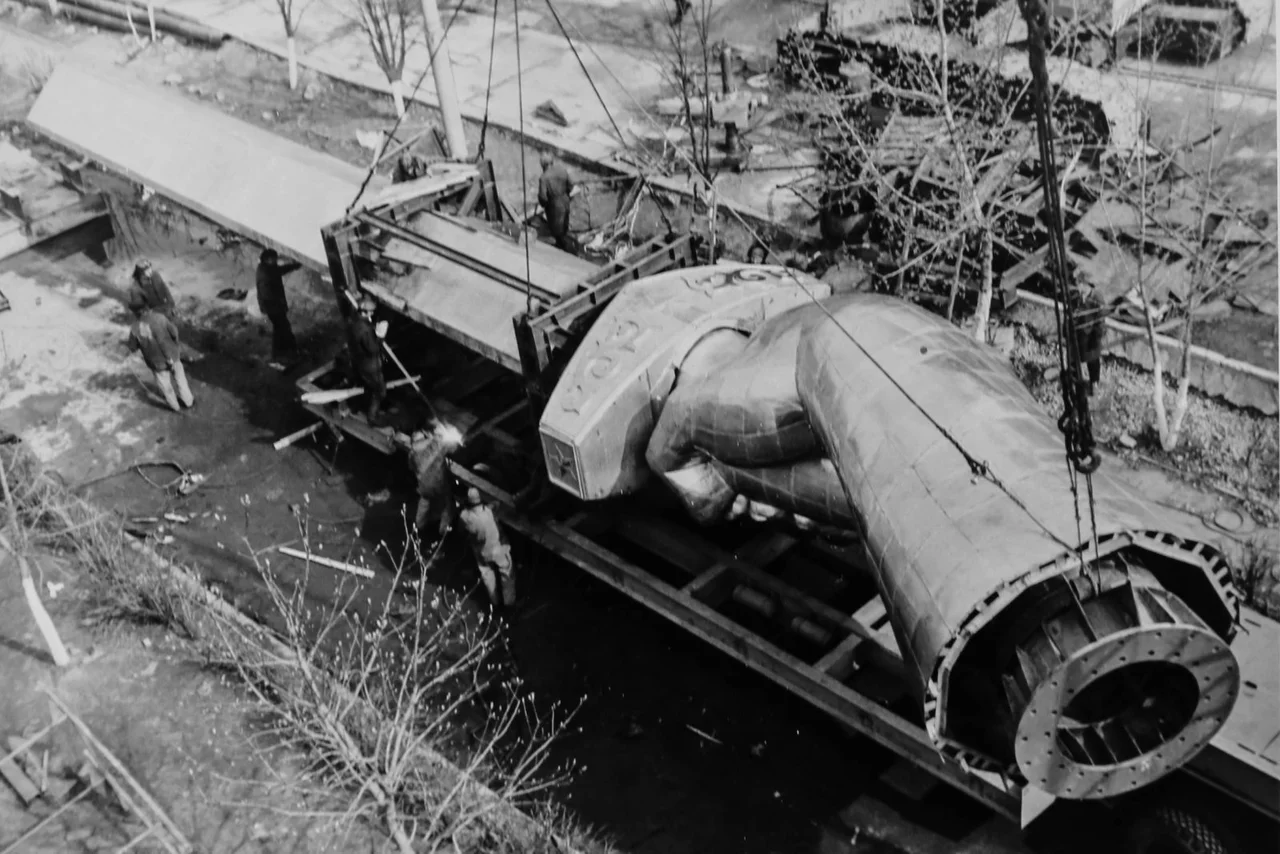 Part of monument.
Part of monument.
The sculpture was installed on a reinforced concrete pedestal by using a 100-meter crane, which was made specifically for this and later dismantled. According to experts' conclusions, the monument can stand without restoration for more than 150 years and withstand an earthquake with a force of up to 9 points. To check the stability of the sculpture, its 10-meter copy was tested for strength in Moscow in the largest turbine in the USSR. Regular inspections show that so far the structure has not tilted by a single millimeter.
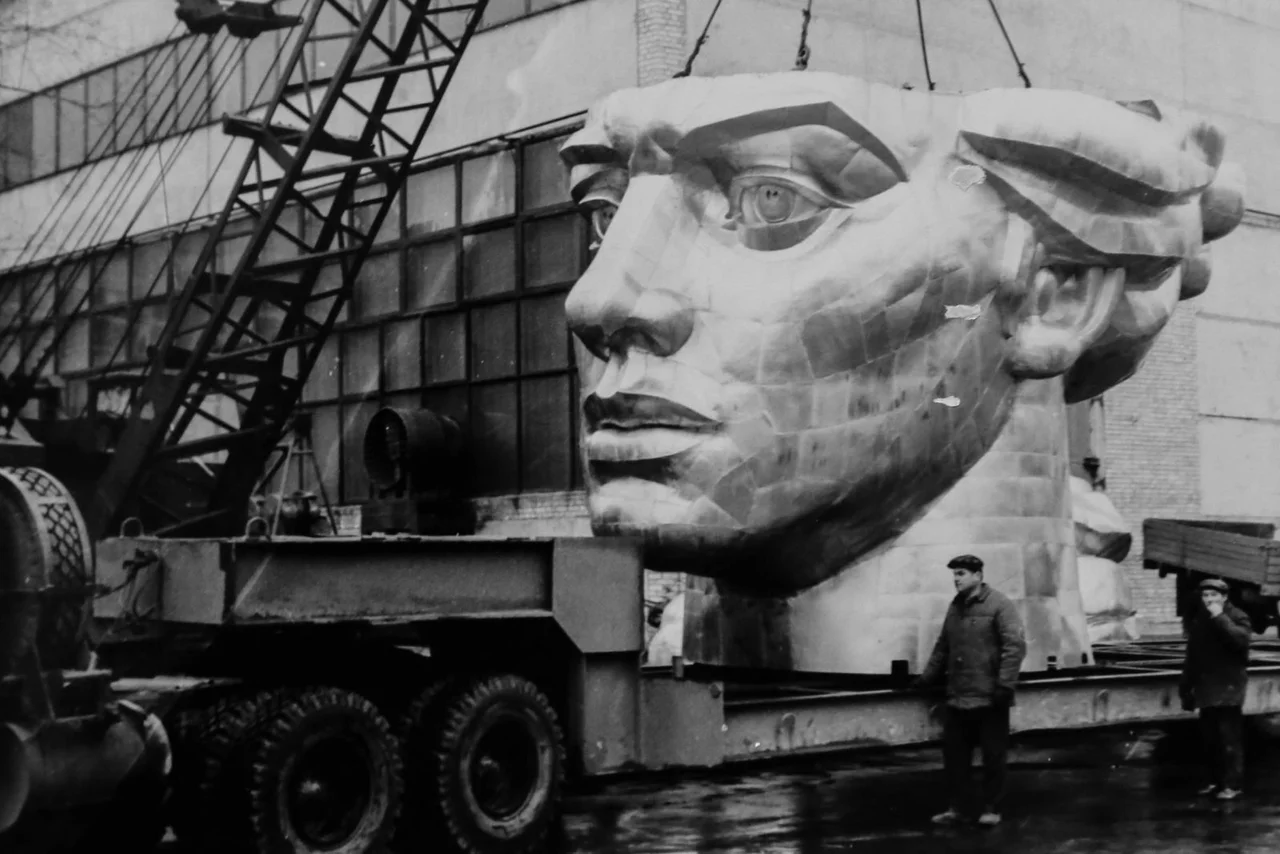 Part of monument.
Part of monument.
The grand opening of the sculpture, which was called "the main symbol of Kyiv," took place on May 9, 1981. Even General Secretary of the Communist Party of the Soviet Union Leonid Brezhnev came to the event. The sculpture cost the city more than 2 million karbovanets (1 dollar cost 0.76 karbovanets in 1981). Kyiv's "Steel Lady" is included in the UNESCO World Heritage List as one of the most beautiful works of art in the world.
The Motherland monument has the face of the Ukrainian artist Nina Yatsenko, who at the age of 21 posed for masters for the sculpture. The story is as follows: during her student years, Nina worked as a watchperson in the Botanical Garden near the Vydubychi Monastery. Next to the dining hall, artists and architects rented rooms for workshops. According to one version, Nina walked past them in a black Ukrainian folk scarf. The sculptors and artists were standing there, in particular Vasyl Boroday, Halyna Kalchenko, Valentyn and Mykola Znoba, and Fridrich Sohoyan. The latter exclaimed, "It's her! Take off the scarf. What a neck! That's a typical Ukrainian woman!" Nina was invited to pose for the sculpture. At the Dovzhenko film studio, she was dressed in a coarse, heavy and uncomfortable linen shirt. It was difficult to pose, the hand that had to be held up all the time went numb. They sculpted for 3-4 hours every day.
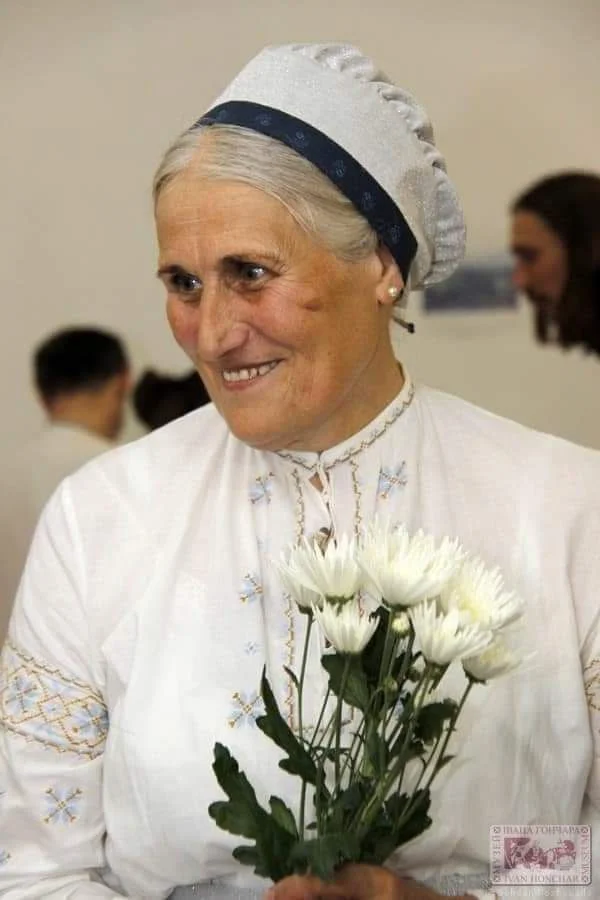 Ukrainian artist Nina Yatsenko
Ukrainian artist Nina Yatsenko
The total height of the monument is 102 meters, which is higher than the Statue of Liberty in New York, which is 93 meters. The weight of the structure is 450 tonnes. The height of the woman with the sword without the pedestal is 62 meters, the dimensions of the shield are 12 x 8 meters. A 9-tonne pendulum is inside the 16-meter sword to dampen vibrations.
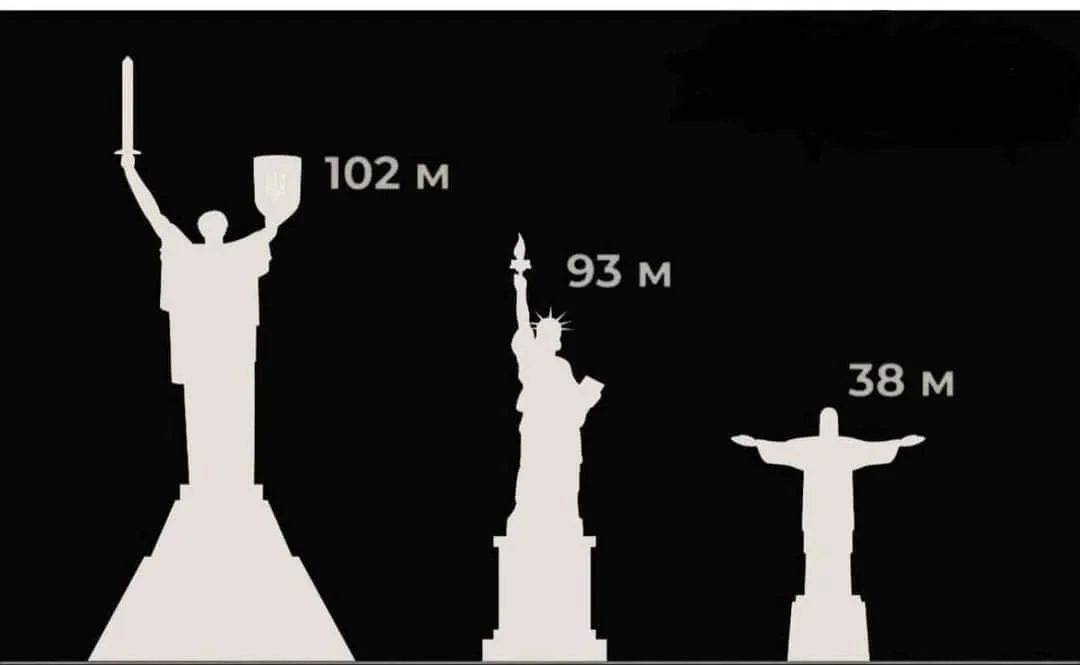
One can move up to the top of the statue from inside the monument with the help of two unique elevators – one inclined at an angle of 75 degrees and a vertical one. The Landscape viewing platform is located at an altitude of 36.6 meters, and the Extreme platform – at 91 meters.
The Motherland monument is located at 24 Lavrska Street.
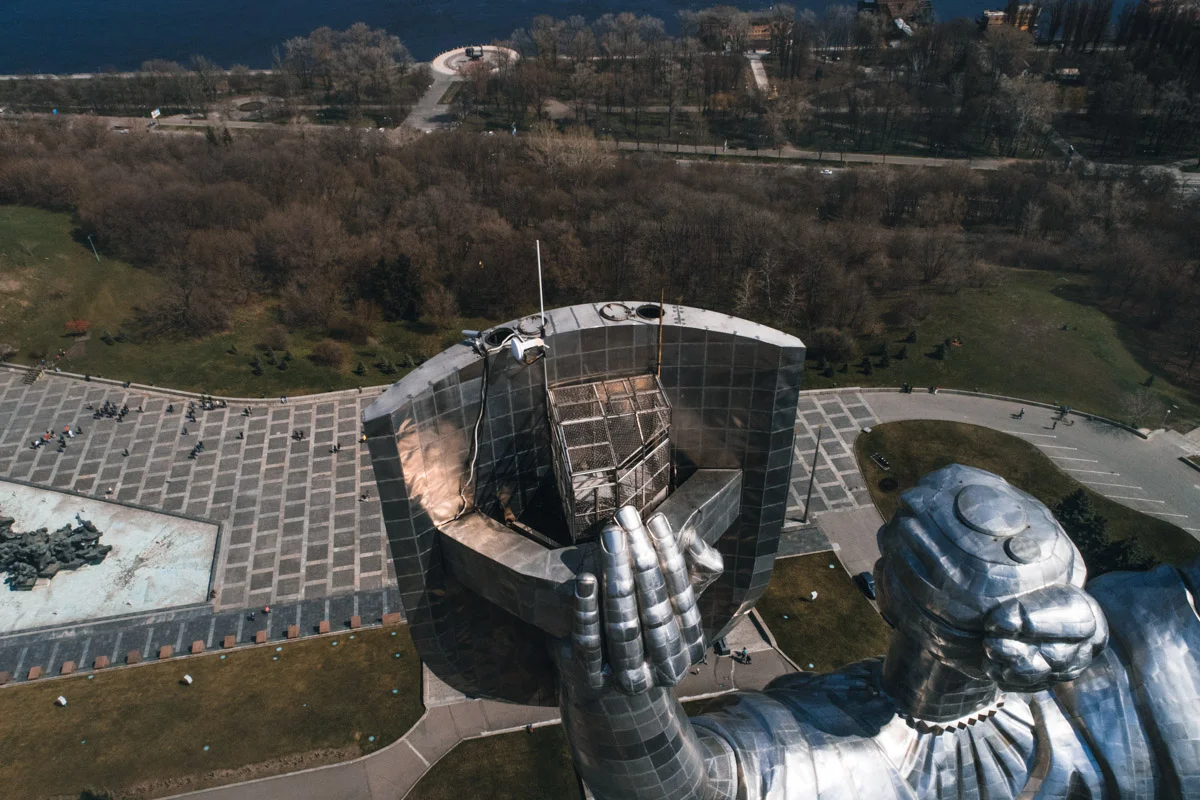
You can also highlight the text and press Ctrl + Enter



